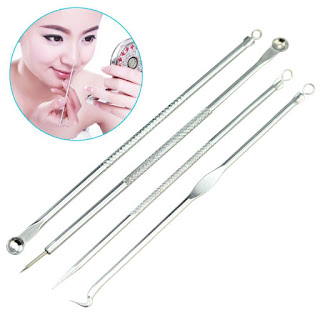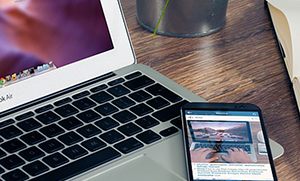Sometimes, skin care acne treatment takes several months, depend on
severity of the acne.
You can treat your own mild acne such as the spots,
whiteheads, and blackheads using a cream or gel containing
benzoyl peroxide.
This cream or gel can you buy freely without a prescription.
Here are some helpful suggestions for you to treat acne.
- Use soap or mild facial cleanser and warm water to clean the area with acne. But avoid using water that is too hot or cold because it can make acne worse.
- Do not over wash the area of skin with acne because it will only worsen the irritation. Just wash it twice a day.
- Set up your hair so as not hit your face and wash your hair regularly to keep it clean.
- Do not try to remove blackheads by pressing it because it will be worsen and leave scars.
- Do not overuse cosmetics or makeup.
- We recommend to use a water-based cosmetic products which have no effect to block the skin pores.
- Clean up your makeup before your bed.
- If you have dry skin, use a water-based moisturizer that does not contain perfume.
- If you're treating acne, you should not expect quick results because the process may take up to three months. Patience is needed during this treatment process.
If the irritated area is widespread, and papules and pustules appear in large quantities, or do not go away even if treated, go to your doctor immediately. Usually, your doctor will give you a prescription.
Acne medications commonly purchased through a doctor's prescription include topical antibiotics, topical retinoids, contraceptive pills for women, isotretinoin tablets, antibiotic tablets, and azelaic acid.
The doctor may refer you to a dermatologist if painful nodules appear, besides appearance large amount of papules and pustules on your chest, back, and face.
Skin care acne treatment with Topical Retinoids
In addition to preventing the clogging of hair follicles by dead skin cells, topical retinoids are also able to reduce sebum production in the oil glands.
Drugs commonly used topical retinoids are tretinoin and adapalene, available in cream and gel form.
This medicine is usually used once before bedtime, which is 20 minutes after you wash your face.
There are several things should be watch out before taking this drug.
For pregnant women, topical retinoids should be avoided because this drugs can cause birth defects.
Besides, take this drug as the dose and protect your irritated skin from the over-exposure sunlight, especially ultraviolet rays.
Usually this treatment is taking for six weeks.
But to prevent acne reappearing, you may be advised to continue using this drug with a rare frequency.
Doctors sometimes recommend the use of topical retinoids combined with dapsone for more effective results.
However, this drug combination has the potential side effects in some users, ie dry skin and redness.
Skin care acne treatment with Benzoyl Peroxide
Benzoyl peroxide can prevent dead skin clog the hair follicles and kills the bacteria that infect blocked follicles.
This drug is used on facial acne areas in 20 minutes after you wash your face.
Benzoyl peroxide is available in gel and cream form.
Use of this drug as the recommended dosage. Overuse of this drug will cause skin irritation.
Some side effects from the use of this drug include the sensation of itching, stinging, and heat on the skin.
Besides, the skin will becomes harden and dry, moreover skin will becomes redness and peeling.
Avoid over-exposure of the sun's ultraviolet rays when using this benzoyl peroxide because this drug can cause your skin more sensitive to those rays.
This drug also has a whitening effect, so don't get exposed to your clothes or hair.
You do not need to worry about the side effects of this drug because it generally goes away by itself after the treatment is completed.
To remove all of your acne, benzoyl peroxide is usually used for six weeks.
However, afterwards, some patients may be advised to continue using this drug with less frequent of use to prevent acne.
Skin care acne treatment with Azelaic Acid
Azelaic acid is used to get rid of dead skin and kill acne bacteria.
This drug is commonly used as an alternative for someone who do not want to undergo treatment with topical retinoids or benzoyl peroxide because of its annoying side effects.
This drug does not make the wearer sensitive to sunlight.
However, it does not mean the azelaic acid drug has no side effects. Side effects remain even lighter.
Some of the side effects of using azelaic acid can make skin looks redness and dryness.
Sometimes the skin is also feels itchy, burning, or stinging.
Azelaic acid is available in gel or cream form, usually used twice or once a day for someone with more sensitive skin.
The initial efficacy of this drug will be seen a month after its use.
Skin care acne treatment with Topical Antibiotics
Topical antibiotics are used to kill bacteria on the skin that can infect the clogged hair follicles.
The drug is available in liquid or gel form.
There are some side effects that can occurs with this treatment, although it is rare.
These side effects such as the skin looks red and feels burn, mild skin irritation, and sometimes peeling.
Topical antibiotics are commonly used once or twice a day.
This treatment is usually carried out for 6-8 weeks.
After this period, use of this drug should be stopped, so that bacteria on the face does not to be resistant to this drug.
Resistant bacteria will increases the infection or cause acne will be worsen.
Antibiotic tablets to treat severe acne
For high acne severity, treatment can be done by combining topical medications with antibiotic tablets.
Recovery commonly will be seen after six weeks of treatment, depending on the reaction of each user.
Indeed, in some case, recovery will be seen after 4-6 months.
In most severe cases of acne, the doctor will prescribe a type of antibiotic called tetracycline.
However, this drug is usually not given to women who are pregnant or breastfeeding.
As a substitute drug for pregnant women, the doctor will recommend an antibiotic called erythromycin because it is safer to use.
Besides can make your skin sensitive to the sun's ultraviolet rays, tetracycline also can cause contraceptives pills less effective during the first few weeks of treatment.
Usually you are advised to use other contraceptives, such as a condom, during this treatment.
Skin care acne treatment with antiandrogen
If antibiotics can not eliminate acne, antiandrogen may be considered by a doctor.
This drug works by blocking the androgen effect on the sebaceous glands.
An example of androgen drugs is spironolactone.
Isotretinoin to prevent clogged hair follicles
Isotretinoin is an acne medication in tablet form.
This drug is able to prevent the clogging of hair follicles and reduce the amount of bacteria on the skin.
In addition isotretinoin also helps reduce sebum production in the skin glands.
Isotretinoin can also relieve swelling in acne spots and reduce redness around the infected skin.
Most users of isotretinoin drugs take 4-6 months before results are seen.
During the first 7-10 days of treatment, acne will look more spread out.
But don't be worry, this kind of condition is normal in the early days of usage.
Apart from a number of advantages above, this drug also stores various side effects.
Therefore, the use of isotretinoin is only recommended for someone who suffered severe acne and could not recover with other treatments.
In other words, it is only given to someone whose treatment is specifically prescribed by a dermatologist.
Some side effects of isotretinoin include:
- Changes in blood sugar levels.
- Inflammation, dryness, and cracks that occur on the skin, lips, and around the nostrils.
- The presence of blood in the urine.
- Blepharitis or inflammation of the eyelids.
- Conjunctivitis or inflammation and eye irritation.
There are issues that isotretinoin users experience a mood swing.
Although there is no evidence about it, it helps you take precautions.
Ask your doctor if you feel depressed or anxious, aggressive, or think about suicide after starting isotretinoin usage.
Other rare side effects of isotretinoin are kidney disease, pancreatitis and hepatitis, or inflammation of the liver.
Therefore, you are advised to perform blood tests before or during this treatment to avoid these three risk risks.
The side effects of isotretinoin which very concerned on pregnant women is abnormalities in the fetus.
This drug should also be avoided by women who are breastfeeding.
If you are a woman who is entering childbearing age, you should use one or two methods of contraception for one month before starting treatment, during treatment, and for one month after treatment.
Even if you had used a contraceptive method, you still need to take a pregnancy test before, during, and after treatment.
For women who were pregnant or felt she was pregnant, it is forbidden to use isotretinoin.
Contact a dermatologist immediately if you feel you are pregnant while taking isotretinoin treatment.
Hormone therapy for menstrual women with acne
The positive impact of hormone therapy treatment is often perceived women with acne, especially if the acne appears during the menstrual period, or if it relates to a hormone problem, such as polycystic ovary syndrome.
If you have not used the medication, a doctor may recommend you take combination oral contraceptives.
Generally in women, combined contraceptive pills can help treat acne even though it can take up to a year before fully visible results.
Others non-drug therapy options
In addition to using drugs, there are several other acne treatment techniques.
This treatment technique can be done alone or in conjunction with drug consumption.
The first is chemical peels. In this method, the acne skin will be exfoliated, it is to grow a new skin layer. In the process, chemical peels involve chemicals, ie salicylic acid.
Therapy using blackhead extractor also can be performed. Like it's name, this method use a certain tool to remove the blackheads.
Steroid injections to eliminate acne nodules and cysts may also be performed. Through this technique, doctors do not need to perform a surgical removal, but only by injecting steroid drugs on the skin which has problem.
Another technique is photodynamic therapy (also called light therapy). Through this method, acne is removed by killing inflammatory bacteria by firing light.

































